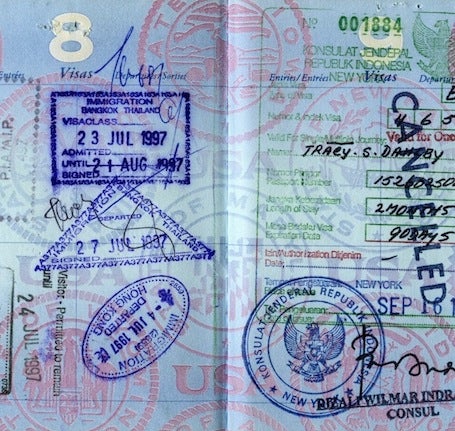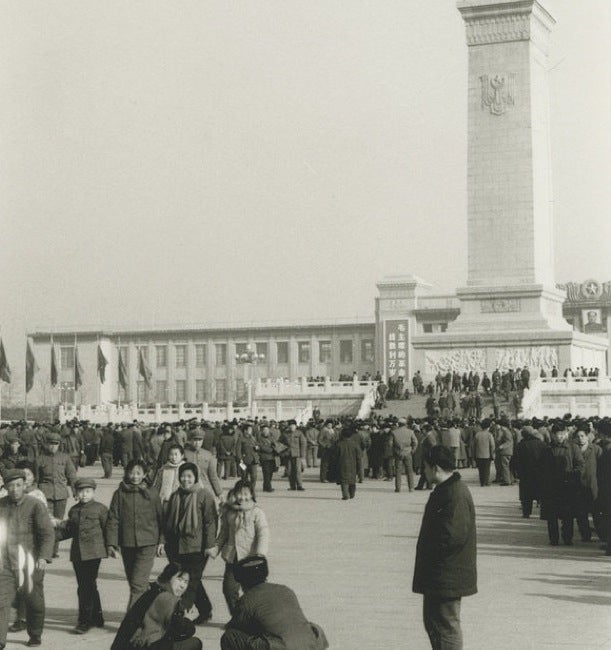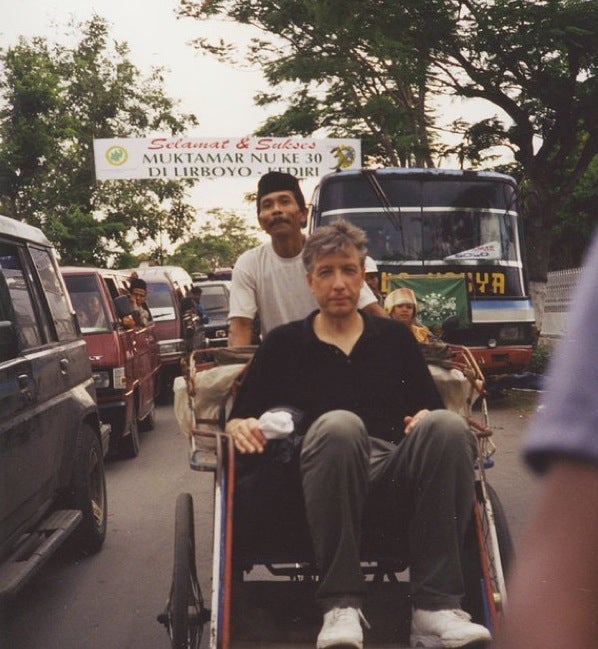Into the Field


In the course of his storied career, Journalism Professor Tracy Dahlby has served as a contributor to National Geographic and as a staff correspondent for Newsweek and the Washington Post. In his latest book, “Into the Field,” Dahlby recounts his time reporting in a broad swath of Asia, sharing adventures involving sea captains, tribal chieftains and insect attacks.
Released in October, these “stories behind the stories” chronicle a region in the midst of political transition and tumult as witnessed by China’s rise as a global power and Japan’s transformation through the decades.
You’ve had an extensive career as a journalist. Why did you focus on your work for National Geographic?
As I write in the book, the answer, in a word, is “luxury.” My editors at the Geographic gave their writers and photographers a rare gift—the luxury to travel the world at your own pace in pursuit of the story while the magazine paid the bills. But the biggest luxury was freedom. I was free to report where my nose led me without adult supervision or editors breathing down my neck. It takes so much time to cook an omelet and the editors understood that. The opportunity to shed light on far places under those conditions was an unqualified blessing.

What’s the most impactful story you covered as a reporter that’s addressed in the book?
I’d have to say, in historical terms, the rise of China and Japan in the 1970s and 80s. When I first went to China in 1978, it was a much different country than it is today—wave after wave of bicycles in the big cities and relatively few cars, the Mao suit as the dominant fashion statement and few amenities for either the Chinese citizen or foreign traveler. Today, it’s sometimes hard for new arrivals to see beyond Starbucks and KFC to what has really changed, what hasn’t, and where genuine permanent change is underway. For Japan’s part, the country rose from a more developed plateau when I was a reporter there in the 1970s and 80s, but that transformation was as thrilling to behold as the country’s more recent “midlife” transition has been, at times, hard to witness.
Was there ever a situation where you felt in grave danger?
I’m a risk-averse reporter and make preparations for fieldwork as meticulously as I can. Sometimes, though, even the best attempts at preparation can go south on you. For example, I managed to get on a ship with 600 jihadis on an anti-Christian crusade in a remote area of Indonesia. That made for an enlightening but somewhat awkward few days since I stuck out like a sore thumb. Also, once you get on a ship that’s moving, it’s hard to get off. But it’s the routine stuff that tends to be the most problematic—a wild, heedless driver, for example, or the driver who is so nervous that he nearly backs into the thugs tailing you in the car behind. Things like that. A Geographic photojournalist once said to me, “Flying is the most dangerous thing we do,” and she was probably right. Flying in planes that are often in poor repair in certain parts of the world isn’t a very glamorous form of danger—it’s just plain dangerous.

Indonesia, 1999. Credit: Norman Wibowo
Did you have to learn things the hard way as a foreign correspondent?
Some of the hardest lessons have come from failing to properly prepare for an interview and finding yourself without the proper context to make it pay off. That can be a waste of time and effort—of yours and the people you’re interviewing. But there are quirkier examples, too. I was riding the elevator in a small hotel on Borneo late one night with a cheerful, red-suited bellman when I stepped on a cultural line I didn’t know existed. Short of stature and powerfully built, the young man asked me offhandedly what I thought of professional wrestling. The correct answer in such situations is always, “I don’t know, friend, what do you think?” But it had been a long day and so I stupidly said I thought professional wrestling was a big fake. That was a mistake. The bellman was obviously a big wrestling fan and became extremely agitated in that small elevator.

City, 1994.
What do you want student journalists and readers to take away from the book?
That going into the non-virtual world is really the best form of knowing—provided you’ve done your homework while still at home and your shot card is up to date. That adversity, small or big, comes to all travelers but it’s usually short-lived and, in most cases, the experiences you collect outweigh the hardships. That while life today is more instantaneously diverting thanks to our marvelous digital tools, there’s a danger in seeing something digitally and thinking we understand it when we don’t, thinking we’ve experienced the real thing when we haven’t. Firsthand observation is still, by and large, the best tonic for curious humans there is.
For more information and pictures, visit http://www.tracydahlby.com/.
